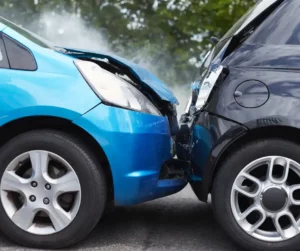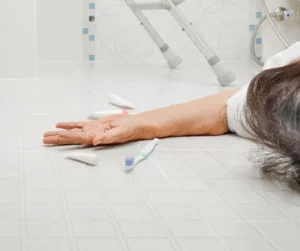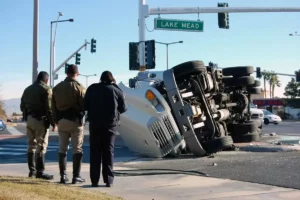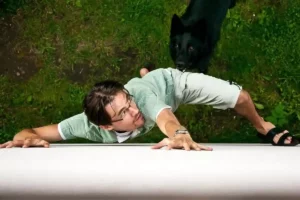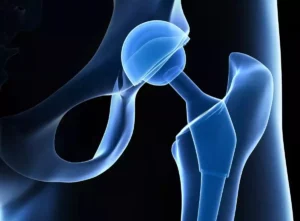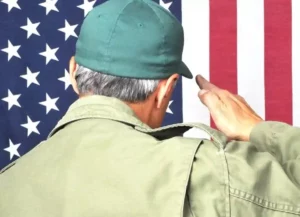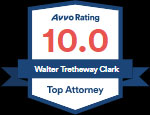According to the National Safety Council, 9 million people in the U.S. go to the emergency after being hurt in a slip and fall accident each year. Of course, not every single slip and fall is a case of negligence, but oftentimes these incidents are caused by hazards on a person or business’s property.
Most times, a slip and fall results in minor injuries like scraped knees and a bruised ego. But other times these accidents can cause severe debilitating injuries. The elderly are especially at risk for severe injuries from slip and fall accidents. Injuries that can result from a slip and fall include:
- Broken bones
- Dislocations
- Sprains and strains
- Concussions
- Spinal cord injuries
- Concussions and traumatic brain injuries
Even if the victim does not suffer permanent injuries, their injuries might require expensive treatments and time off work. These expenses can add up quickly, causing financial strain on the victim. Thus, it is important to seek compensation if negligence contributed to your slip and fall injury.
Who is Liable in a Slip and Fall Accident?
That said, proving negligence is not as simple as it might seem. To determine whether a property owner is liable for a slip and fall accident, you must determine who the potentially liable parties are and whether or not their negligence caused the accident.
Property owners have a duty to keep their premises safe to avoid injuries to visitors. This goes for residential property owners, business owners and even government agencies. The property owner must keep their premises in good condition and must repair anything that is potentially hazardous. They must also warn visitors of potential hazards, such as posting a “Wet Floor” sign to warn customers of a spill. Some examples of negligence on property that could result in slip and fall accidents include:
- Failure to clean up spills
- Inadequate lighting
- Exposed wires
- Slippery surfaces
- Uneven or cracked flooring
- Debris in walkways
Did the Property Owner Make Reasonable Attempts at Safety?
The key to determining whether someone is liable for a slip and fall accident lies in the term “reasonable”—which can be somewhat subjective. Although in some cases it might be obvious that a property owner failed to ensure a reasonably safe environment, it might not always be crystal clear—especially if the property owner has hired an attorney for representation. Some questions to consider when determining whether the property owner took “reasonable” safety measures are:
- Did the hazardous condition exist long enough for the property owner to reasonably take action to correct it?
- Did the property owner routinely check for safety on the property? If so, is there any log of the hazard and/or attempts to fix it?
- Was there reasonable justification for the hazard to be there?
- Could the property owner have taken measures to make the hazard less dangerous, such as relocating an obstacle or preventing access to the unsafe location?
Determining whether a property owner acted reasonably can be difficult for someone who is not an expert in law. An experienced personal injury attorney will be able to make a good assessment of the case and help you determine whether to seek compensation.
Was More than One Party at Fault in the Slip and Fall?
The reality is that while property owners must maintain reasonably safe conditions, they are not responsible for things a reasonable person is expected to avoid. Additionally, it might be difficult to prove negligence if there is evidence the slip and fall victim somehow caused the accident. For instance, if the victim was distracted by texting on their phone, their distraction could have contributed to the incident. Likewise, if the injured person was in a dangerous location without permission, or ignored posted warning signs about the danger, he will probably be considered responsible for his own injuries.
If both parties are at fault, the victim might still be able to recover compensation for his injuries. For instance, perhaps the victim was distracted by a cell phone, but the floor was also wet and there was no posted warning. In this case, both the slip and fall victim and the property owner might be considered at fault in the accident.
Does Comparative Negligence Apply to Your Case?
In California, the legal rule for shared fault in a personal injury case is comparative negligence. This means that the percentage of fault for each person must be assessed. From there, the parties can collect damages equal to the percentage of fault belonging to the other party.
Proving negligence in a slip and fall accident can be difficult. However, a good attorney will be able to help you navigate the process. Getting the compensation you deserve after being injured is crucial for remaining financially stable. It will also ensure you and your dependents are taken care of in the aftermath of your accident.
“Slip and fall accidents can cause victims to suffer severe injuries that might totally change their lives. If this is the case for you, you should consult with a personal injury attorney to determine the best course of action,” said Attorney Walter Clark, founder of Walter Clark Legal Group.
Our firm has been handling personal injury cases throughout the California Low Desert and High Desert communities for over 30 years. With a 95% success rate, the California personal injury attorneys at Walter Clark Legal Group will fight to hold those responsible for your loss accountable and win compensation to cover medical bills, lost wages, and pain and suffering. If you have been in a slip and fall and want to discuss your legal options, contact us today for a free consultation with an experienced personal injury lawyer. We have offices in Indio, Rancho Mirage, Victorville, and Yucca Valley and represent clients through the entire California Low Desert and High Desert communities.
DISCLAIMER: The Walter Clark Legal Group blog is intended for general information purposes only and is not intended as legal or medical advice. References to laws are based on general legal practices and vary by location. Information reported comes from secondary news sources. We do handle these types of cases, but whether or not the individuals and/or loved ones involved in these accidents choose to be represented by a law firm is a personal choice we respect. Should you find any of the information incorrect, we welcome you to contact us with corrections.
- What To Do If You Have Been Injured At A Concert In California? Mar 27,2024
- Walter Clark Legal Group Reimburses Thanksgiving Ride Fares Nov 14,2023
- Walter Clark Legal Group Donates Backpacks to Booker T. Washington Elementary School Aug 22,2023
- Walter Clark Legal Group Donates Backpacks to Underserved Students Aug 22,2023
- Walter Clark Legal Group Reimburses Labor Day Ride Fares Aug 21,2023
- 2023 Safe Ride Home Program Jun 21,2023









